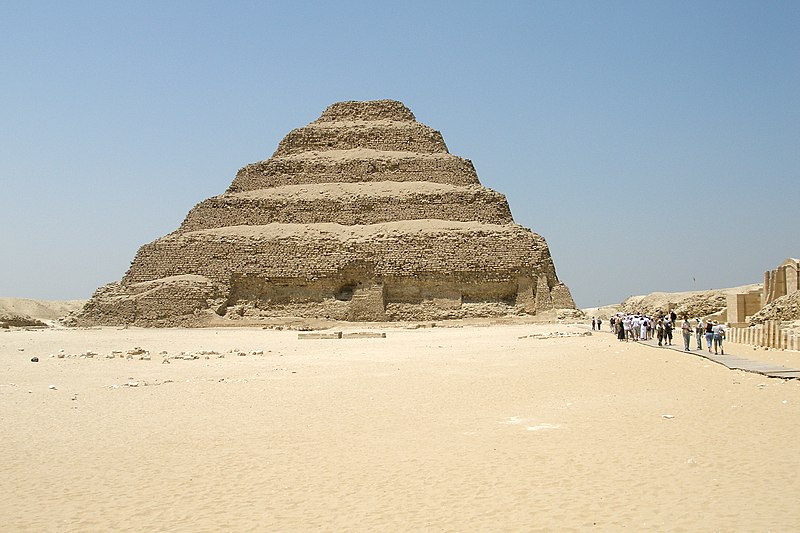Introduction
Ancient Egyptians, eons ago, achieved the unfathomable task of moving colossal stone blocks across immense distances without the aid of advanced technology. These enigmatic feats of architecture, dating back to an era before recorded history, continue to captivate our curiosity. Among these wonders, the pyramids of ancient Egypt stand as a testament to unparalleled ingenuity, defying conventional explanation. These monumental structures, along with temples and statues scattered throughout the land, have attracted the keen attention of experts like a magnetic force.
The Enigma of Moving Massive Stones
The annals of Egyptian history were inscribed in stone, yet the transportation and construction methods employed to erect the ancient Egyptian pyramids remain a perplexing enigma. These awe-inspiring edifices left a profound impact on contemporary observers, including the Roman writer Pliny the Elder, who marveled at their grandeur while pondering how such immense stones were elevated to such heights. This question continues to echo throughout the ages.
A Lack of Ancient Documentation
Regrettably, despite the abundance of ancient relics, no text from the time of pyramid construction has surfaced to provide insights into the methods employed. Scholars believe that the first pyramid in Egypt was built by King Djoser – the Step Pyramid of Saqqara, which emerged over 4,700 years ago, heralding a new era in Egyptian architecture. This six-tiered, four-sided marvel marked the genesis of large-scale cut stone construction.
The Stepping Stones of Mystery

Although not the largest pyramid in Egypt, Djoser’s Step Pyramid remains a mind-boggling testament to the social and cultural implications of such a meticulously sculpted stone structure. Subsequent monuments grew in size and complexity, leading to a profound enigma: as the buildings increased in scale, so did the need for larger and heavier stones. The ancient Egyptians were confronted with the challenge of transporting these massive stones.
Transporting Massive Stones: A Marvel of Ingenuity
Without the aid of modern technology, the ancient Egyptians astonishingly transported stone blocks weighing several tons to build the pyramids effortlessly. These massive stones, ranging from several tons to hundreds of tons in weight, were moved without leaving behind detailed records of the techniques employed. Curiously, the absence of explicit descriptions and blueprints led researchers to propose that friction played a crucial role in the process.
Insights from Scholars
According to prevailing theories, the ancient Egyptians transported massive stone blocks across vast distances, navigating rivers and deserts. The process involved quarrying large stone blocks and using sleds to transport them to their intended locations. However, traversing the desert posed its own challenges. Hauling a 2.5-ton block atop a sled across hundreds of kilometers presented numerous obstacles, most notably sand buildup in front of the sled.
The Role of Wet Sand

Researchers have suggested that the ancient Egyptians ingeniously dealt with this issue by moistening the sand in front of the sled. Wet sand offered less resistance, preventing it from accumulating in front of the sled. A study conducted by the University of Amsterdam demonstrated that the required pulling force decreased proportionally with the stiffness of the sand, making it easier to move the sled across the desert. This discovery shed light on the practicality of using sleds and wet sand to transport massive stones.
The 58-Ton Statue of Djehutihotep

Evidence supporting the use of sleds and wet sand can be found in depictions from the tomb of Djehutihotep, an ancient Egyptian nomarch from the twelfth dynasty. His tomb contained a now-destroyed illustration of what appeared to be the transport of a colossal 7-meter-high statue weighing an estimated 58 tons. According to Egyptologists, 172 workers were involved in this monumental endeavor.
The Challenge of Heavier Stones
While this study demonstrated the potential for moving blocks weighing around 3 tons across the desert, it raises questions about the transportation of even larger stones. For instance, consider the Colossi of Memnon, each weighing a staggering 720 tons. Transporting these massive statues from a quarry near present-day Cairo to a location over 650 kilometers away would require an enormous workforce and seem implausible when using the proposed transportation method.
Unraveling the Ancient Riddles
The methods employed by the ancient Egyptians to transport stones weighing over 150 tons remain shrouded in mystery. If Djehutihotep’s 58-ton statue required 172 workers, then a stone weighing 150 tons might necessitate nearly 400 workers using the same approach. Yet, history reveals that the ancient Egyptians moved stones even heavier than this, like the colossal Colossi of Memnon. The journey to understand these enigmatic feats of engineering continues, challenging our perception of the past and the boundless human ingenuity that shaped it.



